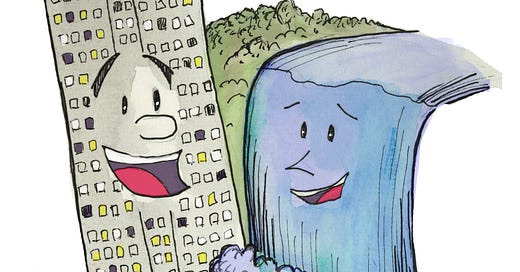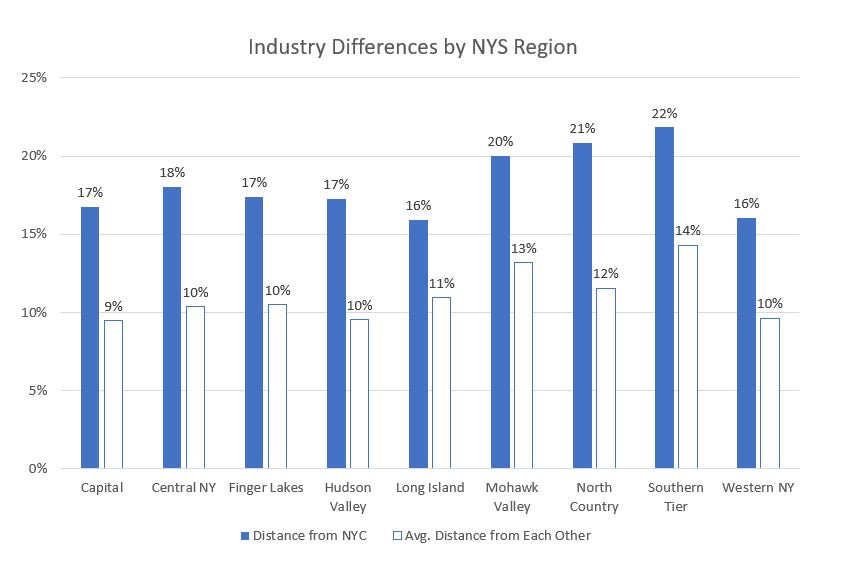As someone who has split his life between upstate and downstate New York, the biggest difference between the rural and city life are best exemplified the first 24 hours after a rainstorm. Walking around upstate, you see the mass congregation of worms on the sidewalk which rise up due to the tidal skies. Walking around the City, you see trash. Walking around upstate, you smell the odor of nature revitalization. Walking around the City, you smell trash.
What does not differ is our confusion of New York City’s role within New York State’s political landscape. While us city folk often question why the State runs the MTA (see last week’s 2xParked on Subway rankings), upstate New Yorkers question why their taxes help pay for our expensive transit system.
As it stands, we need upstate and upstate needs us. For example, most of our drinking water comes from the Catskill/Delaware Watershed. Meanwhile, Upstate New York receives disproportionately more state money compared to taxes paid.
This week, 2xParked takes a deeper look into the upstate/downstate divide.
This is the gravesite of Martin Van Buren, the first president from New York State. He was not from New York City. He was from a small town in Columbia County called Kinderhook. It would be a few more decades until the first person from downstate was elected president.
The Race to 107
I decided to review the 2018 New York State gubernatorial election between Andrew Cuomo and Mark Molinaro. We know that Cuomo won the election by a 20+ point margin. The question I want to investigate is if NYS instead had a system similar to the electoral college, would Cuomo still have won?
I know it is popular to hate on the electoral college these days, but there is merit to keeping it on a national level. One of the strongest arguments in favor of the electoral college is that it forces the candidate to campaign to different regions and people. If the electoral college did not exist, the campaign strategies would be drastically different. Candidates would have little incentive to appeal to less populated areas, instead focusing on winning over major population centers.
Although NYC makes up a miniscule part of the land mass, it has nearly half of the state's population. Because the city leans far to the left, democratic candidates running for state office really only need to earn the trust of downstate to easily win their elections.
As someone from upstate might (justifiably) ask, “why should New York City decide who is my head of state?” The distinction in upstate and downstate priorities are clear in important topics such as the economy. For example, I performed an analysis of the types of jobs people have in the 10 regions of New York State, and I compared how each region was different from each other (see below).
What is important is not the absolute size of the bars but the relative size. We see that the non-New York City regions are very similar in their industry employment (white bars), whereas New York City (blue bars) is about twice as different than the other regions in the state. New York City is more dependent on sectors of the economy which are classified as tertiary (e.g. financial services, real estate), while the rest of the New York is more dependent on secondary (e.g. manufacturing, utilities) and quaternary (e.g. healthcare, education) sectors.
In formulating a NYS electoral college, it was relatively easy to create a natural divide in the state:
There are 62 counties in New York State. Each county would have its own group of gubernatorial electors.
Each county would have at least 2 electors. This would require re-assigning representatives in the state legislature.
Each county would have its own representative in the state senate (totaling 62 senators).
The 150 members of the assembly would be split proportionally based on the population of the county, with each county having at least 1 assemblyperson.
There would then be potentially 212 electoral votes. The candidate would need a majority (107) to win the election.
What does this map mean in terms of the Race to 107?
First, New York City’s influence would be cut in half. Second….Andrew Cuomo would still be our governor, but it would be a lot closer than the 60-40 win he received in the popular vote. Given this hypothetical format, Cuomo would have won with 111 electoral votes, narrowly beating Molinaro.
What is more interesting is investigating what we can call the “tipping county”. If we line up all the counties from largest margin of victory to smallest, we can see which county actually gave Cuomo electoral vote #107. This gives a good idea of what might be considered the “swing counties”, which likely would have had the most television commercials, rallies, and debates pre-election.
Well, that was unexpected. The county which would have decided this theoretical election format would have been Richmond County, aka Staten Island.
I guess it goes to show, it pays to win the New York City vote no matter how you look at it.
MayorModel
One of the critical roles of the mayor is to represent us up in Albany, especially since important aspects of our life are controlled by the state, such as the distribution of state taxes and running the MTA. After observing the successes and failures of recent mayors up in Albany, we have a better appreciation of knowing how to navigate the state government.
Several of our candidates have experience dealing with our friends up in Albany. The two leading candidates arguably also have the most Albany experience. Eric Adams represented Brooklyn in the senate from 2007 to 2013 before his present post, while Scott Stringer was a long-term Assemblyman from 1992 to 2005 prior to being elected Manhattan Borough President.
Here are the latest mayor projections. Barring any new names (Max Rose? Christine Quinn?), I expect these projections to remain relatively stable until early January when new polling and contribution data expected to be released.
"Downstate/Upstate" was drawn by Ink&thyme, drawing life's unforgettable moments. For unique art drawn just for you, check them out on Facebook and on Instagram.
To subscribe to future newsletters, click here.
For more content, follow 2xParked on Twitter @2xParked.
Comments? Suggestions? Questions? Email me at 2xParked@gmail.com.










It would be interesting to see an analysis on where "upstate" begins and "downstate" ends